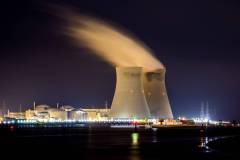The country of Germany is making great gains toward a nuclear fusion-powered future. The German government has released early proposals to increase domestic R&D in the realm of nuclear fusion. Many people see nuclear fusion technology as the wave of the future because of its ability to produce clean energy. However, it is not yet clear how these research breakthroughs will be funded.
Fusion in a nuclear reactor is a novel approach to power generation. Fusion is the process of bringing together atoms, as opposed to the typical nuclear fission method of breaking them apart. This method promises to generate large amounts of clean energy, and also releases a lot of energy in the process.
Bettina Stark-Watzinger, the German minister of science, has proposed funding for all viable fusion research projects. This includes magnet-based technologies, which are already receiving major backing in Germany, and laser-based systems, which have seen recent breakthroughs in the United States.
Nuclear fusion research and development receives extensive backing in Germany. The country is eager to investigate magnet and laser fusion technology and hopes to greatly increase the €149 million ($163 million) allotted annually to such investigation.
In the United States, laser-based fusion techniques are gaining popularity, while in Europe, they are still in their infancy. However, magnet-based fusion has already gained significant backing in Germany, both at Germany’s own Wendelstein 7-X research reactor in the northern town of Greifswald and at the International Thermonuclear Experimental Reactor (ITER) in Southern France.
Although Stark-Watzinger claims that scientists and industry professionals will finally select which power plant model will succeed, the future of the fusion power plant is still unclear. Future research and budgetary allocations will largely depend on the outcome of this decision.
Germany has proven its dedication to nuclear fusion research, but it is unclear how the country plans to pay for its efforts. Stark-Watzinger was reluctant to reveal any information regarding possible financing sources, leaving the future of financial backing for these endeavors in doubt.
Concerns have been raised that the ITER project could suffer if Germany were to shift its priority to nuclear fusion research at home. There have been delays and cost overruns, and the project is under extra stress because Russia is involved; despite its invasion on Ukraine, Russia remains a constructive partner to the West.
Though commercial fusion reactor operation in Germany may be postponed until the later part of this century, the country remains committed to the technology due to its long-term promise. Nuclear fusion is an investment that will pay dividends for future generations, according to Sibylle Gunter, the scientific director of the Max Planck Institute for Plasma Physics.
By 2045, Germany intends to have completely eliminated the usage of fossil fuels. Already, great gains have been achieved in this direction, with the last three conventional fission nuclear power reactors being shut down. Green groups hailed Germany’s action, seeing it as another evidence of the country’s dedication to developing renewable energy.
Germany has no plans to use the older style of nuclear reactors, as stated by Stark-Watzinger. Stark-Watzinger reiterated that any new reactors would not use traditional nuclear power despite requests from within her libertarian Free Democratic Party to reconsider.
She stressed that, unlike atom splitting, nuclear fusion does not result in the same concerns of uncontrolled meltdowns and long-lived radioactive waste. Stark-Watzinger lauded the obvious benefits of nuclear fusion and voiced optimism that Germany offers an ideal environment for developing this technology.
While Germany keeps probing the possibilities of nuclear fusion, the future of funding for such daring endeavors is questionable. The United States’ dedication to renewable power and the potential of nuclear fusion, however, offer optimism for the future.
First reported on: Tech Xplore


















